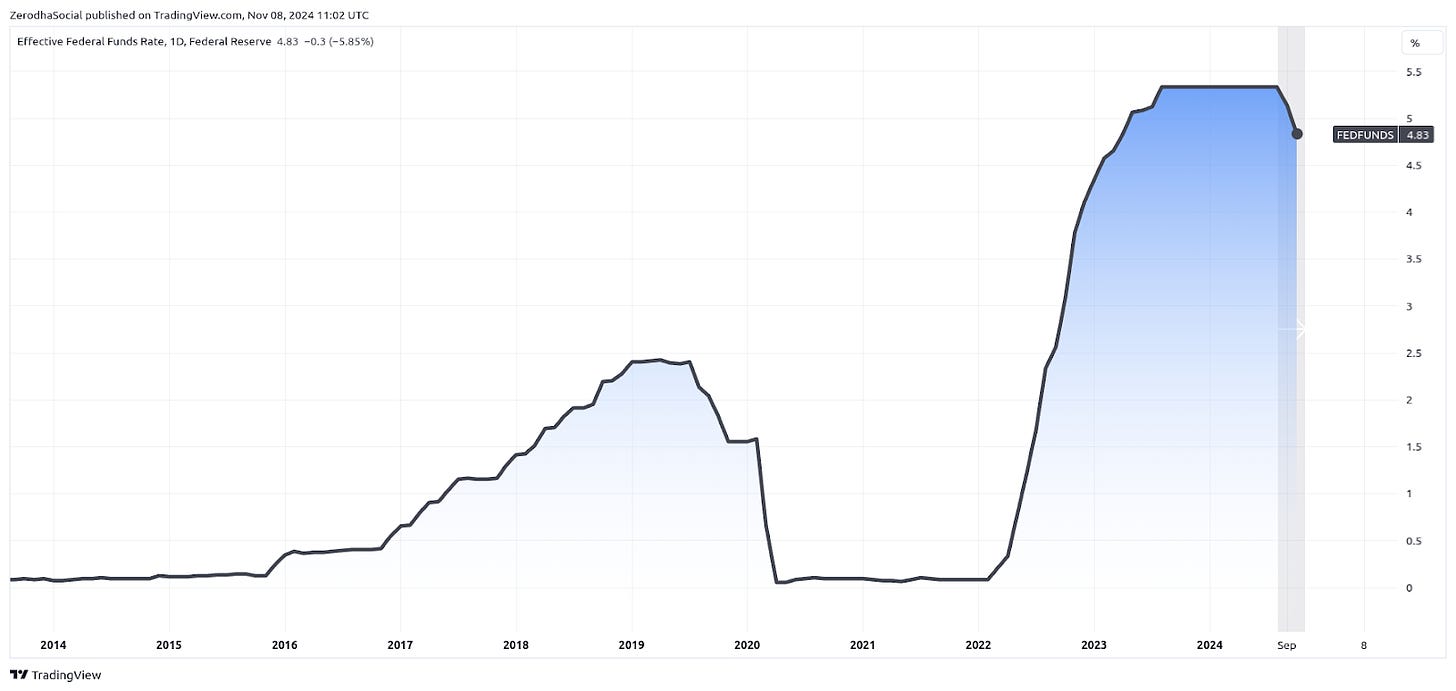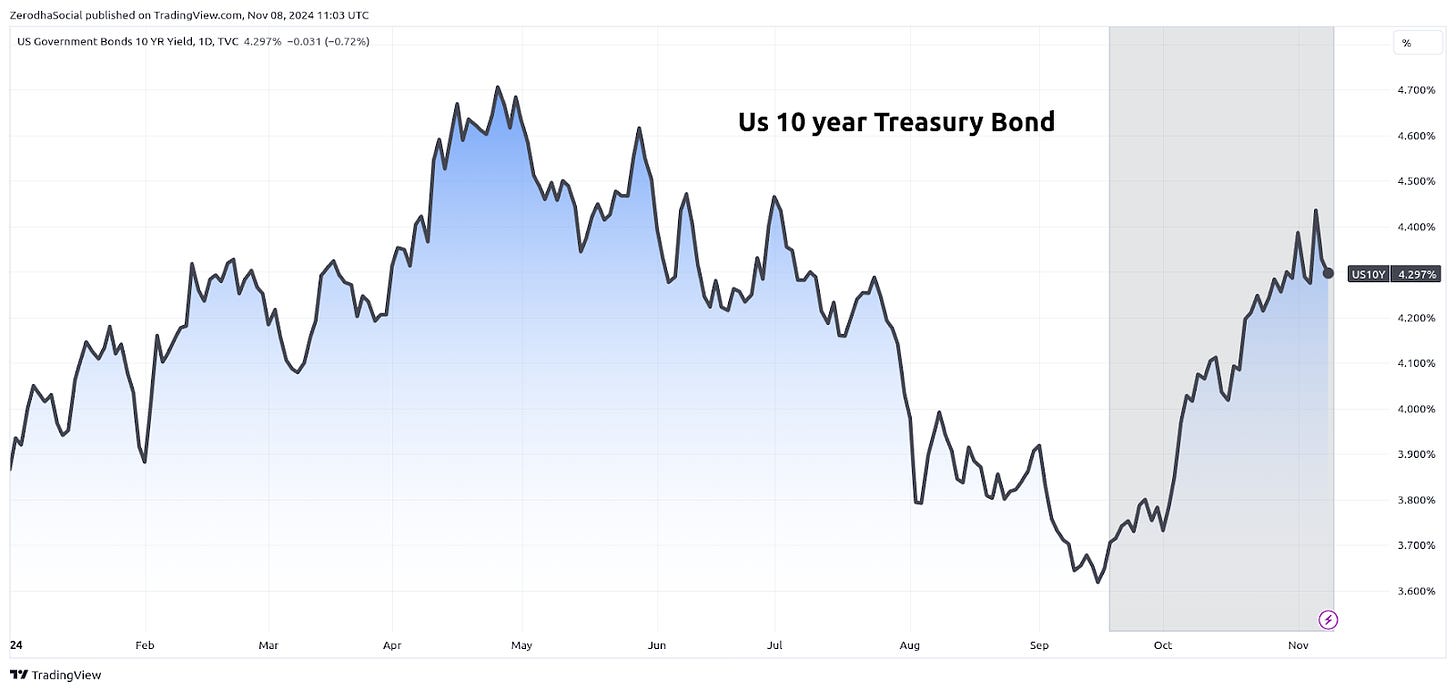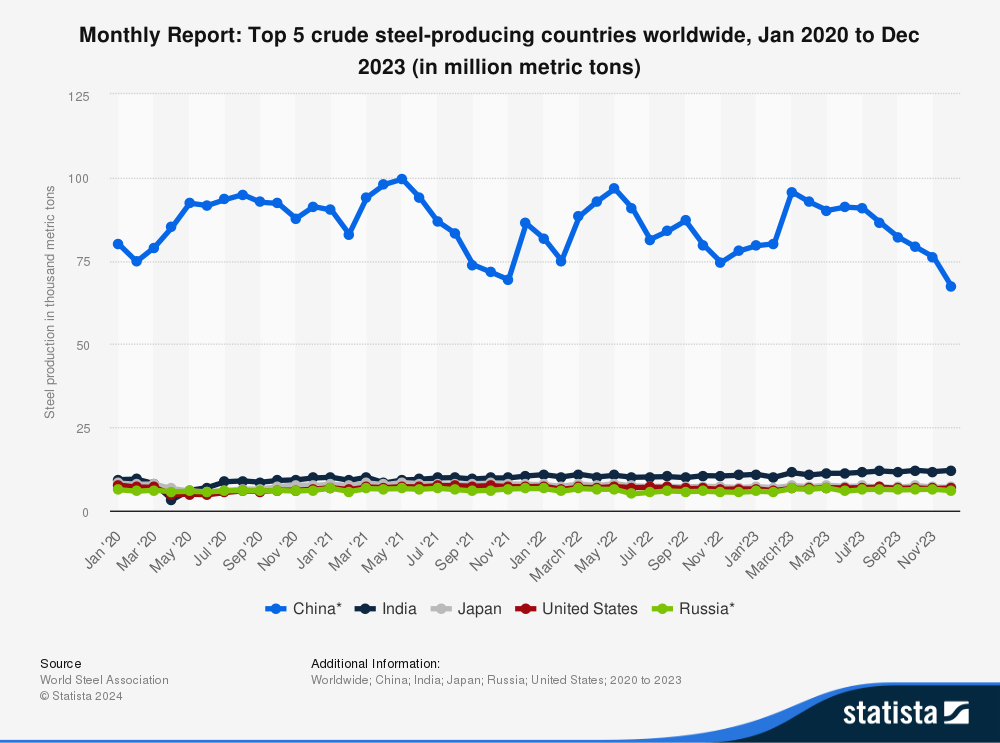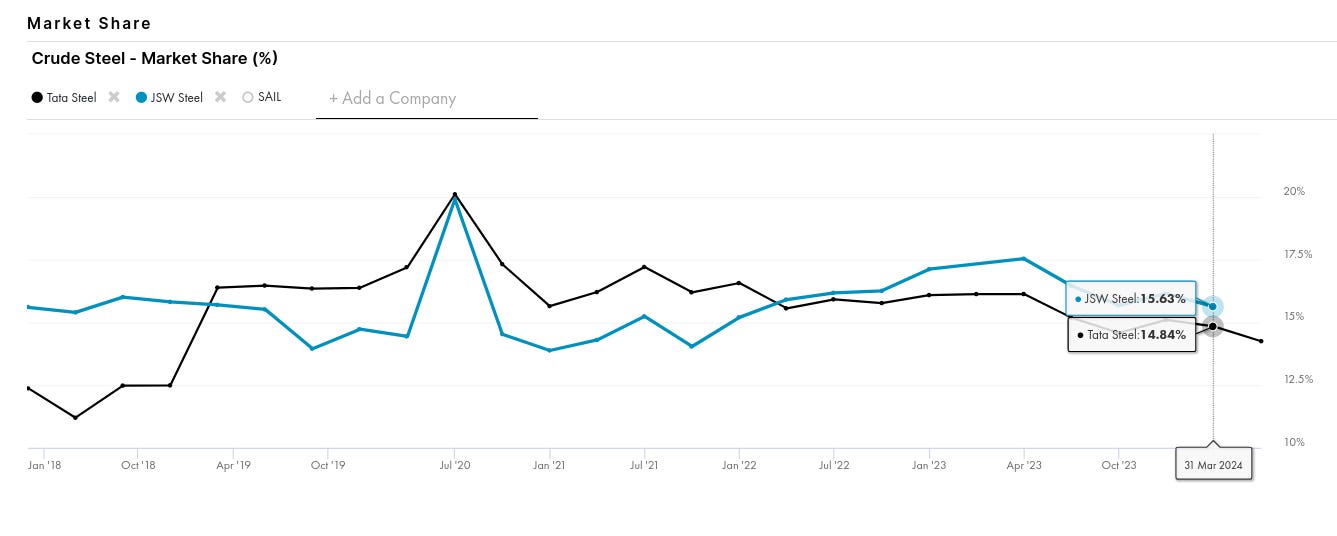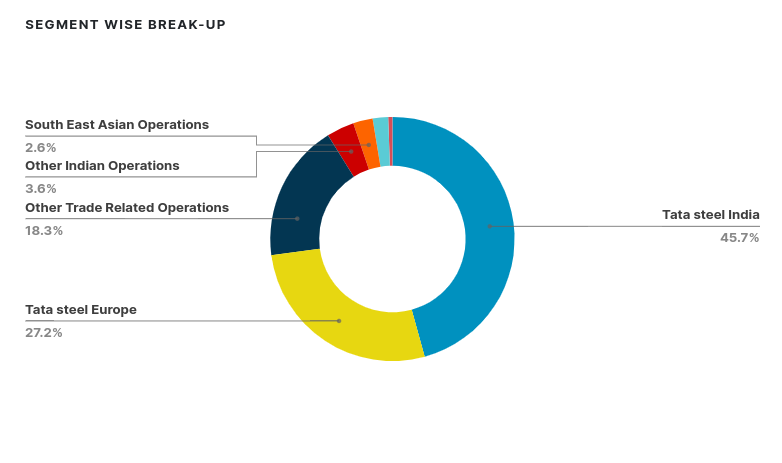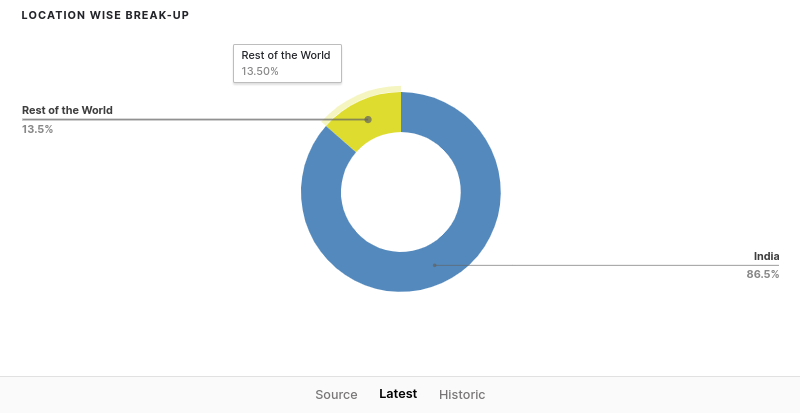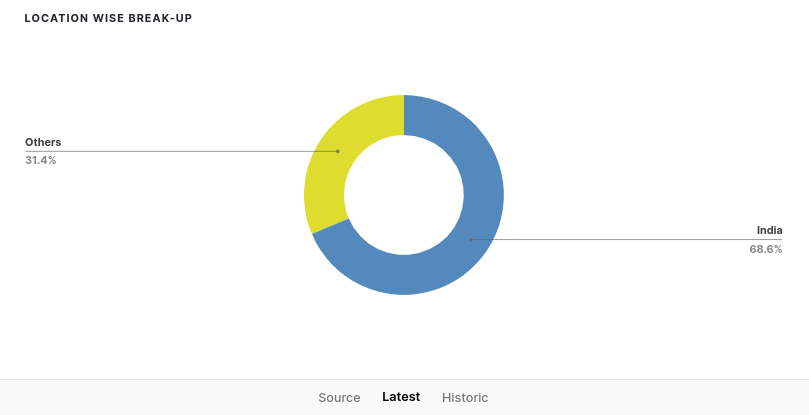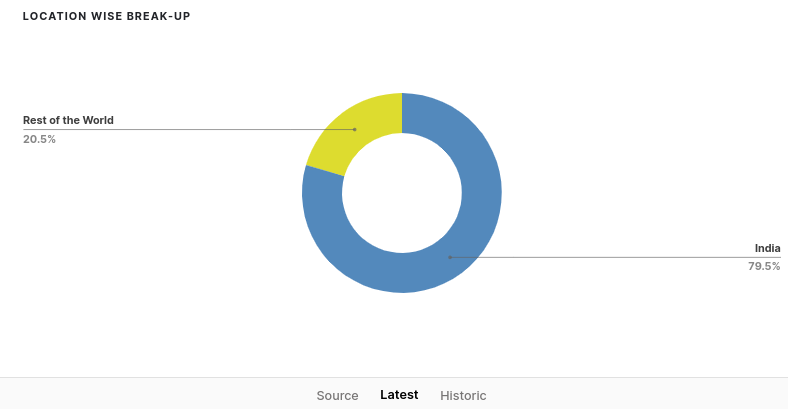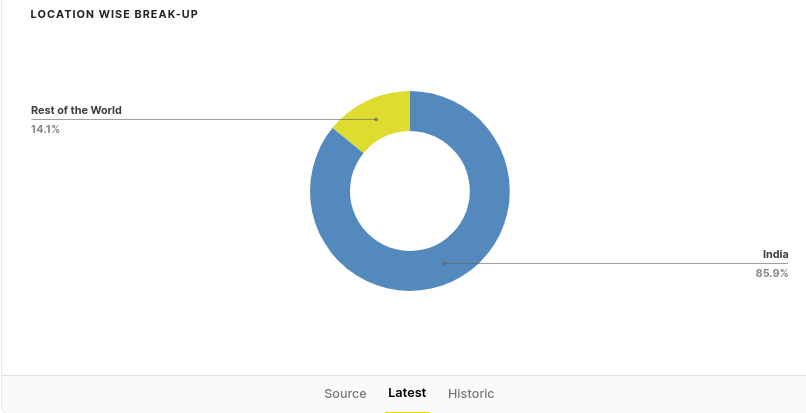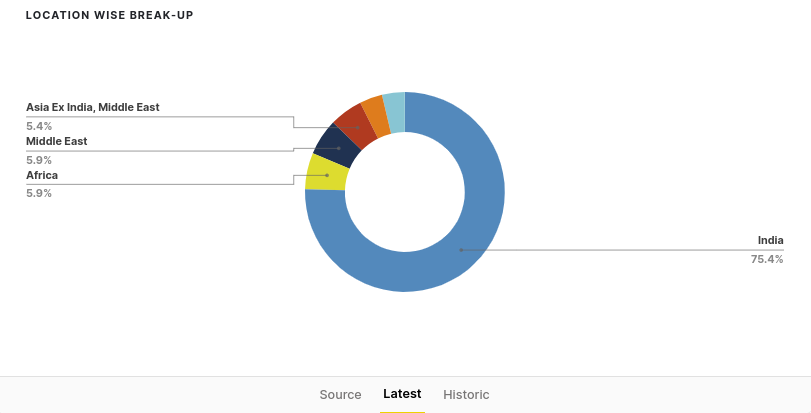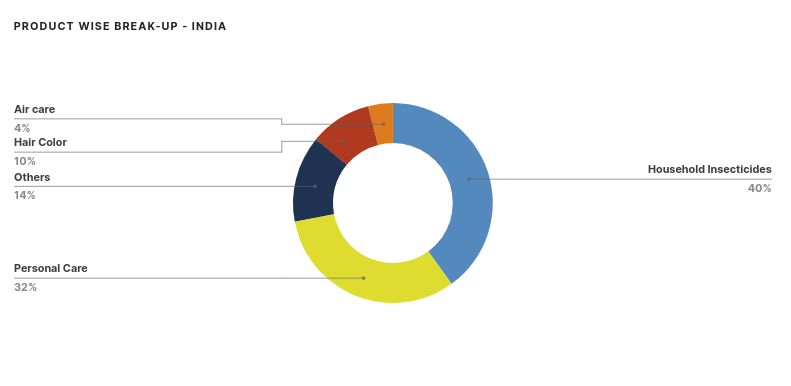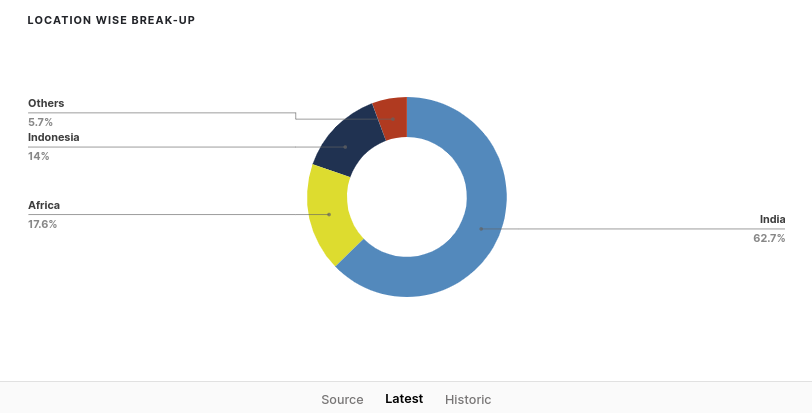Our goal with The Daily Brief is to simplify the biggest stories in the Indian markets and help you understand what they mean. We won’t just tell you what happened, but why and how too. We do this show in both formats: video and audio. This piece curates the stories that we talk about.
You can listen to the podcast on Spotify, Apple Podcasts, or wherever you get your podcasts and videos on YouTube. You can also watch The Daily Brief in Hindi.
In today’s edition of The Daily Brief:
- Why did the Fed cut rates?
- How is India’s steel industry doing?
- Indian companies turn to exports as domestic demand slow
Why did the Fed cut rates?
Let’s dive into what’s happening with the Federal Reserve, or the Fed—the central bank of the United States. The Fed has a huge impact on the economy, and one of its main tools is adjusting interest rates. Think of interest rates as the “cost” of borrowing money—when rates are high, borrowing becomes pricier, which can slow down spending and borrowing. When rates are low, borrowing gets cheaper, encouraging people and businesses to spend and invest. These rate changes directly affect inflation, job growth, and overall economic stability.
Recently, the Fed cut its key interest rate by 0.25%, bringing it down to a target range of 4.50–4.75%. This follows a 0.5% cut in September, making a total reduction of 0.75% over the last few months.
So, why these cuts? The Fed’s trying to balance economic growth while keeping inflation—the general rise in prices—under control. Right now, inflation is slowing down. It’s down to 2.1%, a big drop from the 7% we saw two years ago, showing that the Fed’s previous rate hikes may have helped ease inflationary pressures.
At the same time, the U.S. economy remains strong. It grew by 2.8% in the third quarter, and consumer spending has stayed solid, reflecting people’s confidence in the economy. Meanwhile, job growth has slowed a bit, but that’s partly due to factors like recent labor strikes and natural events, such as October hurricanes, affecting certain areas.
Even with these slight job market dips, the unemployment rate is still low by historical standards, at 4.1%. Though it’s a bit higher than last year, it still signals a stable job market overall. Wage growth has also started to slow down, which aligns with the Fed’s goal of keeping inflation around 2%. Essentially, the Fed aims for a steady economy where prices and wages rise at a manageable pace.
In a recent press conference, Fed Chair Jerome Powell emphasized that the Fed’s policy choices aren’t swayed by political events, including elections. This independence is key to the Fed’s credibility—it allows them to focus on long-term economic health over any short-term political agendas. Powell made this clear, even stating he wouldn’t step down if asked by any president, and noting that legally, a president can’t remove Fed leadership.
As the Fed cuts rates, there’s a surprising trend: bond yields have been rising. Normally, rate cuts make borrowing easier, which tends to push bond yields down, but this time, bond yields are going up. Powell suggested this might be a sign that markets are betting on strong economic growth ahead, rather than fearing inflation.
While inflation overall is down to 2.1%, “core” inflation, which excludes volatile categories like food and energy, is a bit higher at 2.7%. This difference is partly due to housing costs, which tend to be slower to adjust. So, while inflation is moving in the right direction, there’s still some work to do to bring core inflation closer to the Fed’s target.
Powell used a helpful analogy to explain the Fed’s approach: it’s like landing a plane. As you get closer to the runway, you need to slow down and make careful adjustments, rather than landing too quickly. The Fed is closely watching the data and plans to make gradual changes as needed.
Powell also shared insights from conversations with business leaders nationwide, many of whom are optimistic about the future. There’s even hope that 2025 could be stronger than 2024, which has already been a good year for the economy.
Now, you might be wondering what all this means for India.
In theory, lower interest rates in the U.S. are positive for emerging markets like India. Lower U.S. rates can lead foreign investors to look for higher returns in emerging markets, which often have higher yields. This could mean increased investment in Indian debt, equities, and other assets. Additionally, if U.S. equities rise with lower rates, it often boosts sentiment in global stock markets.
That said, a Fed rate cut might put some indirect pressure on the Reserve Bank of India (RBI) to lower rates. But the RBI has been clear that it prioritizes domestic concerns over U.S. rates, focusing on controlling inflation and ensuring financial stability in India.
In practice, though, interest rates are just one factor, and many elements drive the markets. Monetary policy matters, but it’s far from the only thing influencing the economy.
The bottom line? The Fed is cautiously optimistic, making careful adjustments, watching the data, and ready to adapt its approach as needed. The economic outlook looks steady, but the Fed will keep fine-tuning its strategy based on how things unfold.
How is India’s steel industry doing?
Steel is all around us. It’s in the bridges we cross, the cars we drive, our home appliances, and the towering skyscrapers shaping modern cities. In many ways, steel is like the backbone of our economies—it holds things together and keeps everything running smoothly. And just as you might gauge someone’s health by their lifestyle, steel demand can reveal a lot about the health of an economy. When economies grow, steel demand rises to meet the needs of infrastructure projects, manufacturing, and more. But when growth slows down, steel demand often takes a hit.
On the global stage, China leads in steel production, making over half of the world’s steel. India, while smaller by comparison, holds its place as the second-largest producer, although China’s lead is substantial: China produces more than 50% of global steel, while India’s share is around 10%. Even so, India’s role is expanding as it works to meet both domestic and global demand.
Source: Statista
In India, two major players—Tata Steel and JSW Steel—dominate the industry. They both recently shared their quarterly earnings, giving us insight into how they’re handling the ups and downs of the market. But before diving into their results, let’s look at the bigger picture in the global steel market.
Source: Tijori
Since China is the largest steel producer, it heavily influences global prices. When China makes more steel than it needs, it exports the surplus, putting downward pressure on prices worldwide. Right now, with China’s economy struggling, local demand for steel is low. But instead of reducing production, China has maintained its output, exporting over 100 million tonnes of excess steel each year. This oversupply has been pushing global prices down.
In response, countries like the U.S. and the EU have imposed tariffs and anti-dumping measures on Chinese steel imports to protect their local markets. India is also looking at ways to protect its steelmakers from cheaper foreign competition, considering tariffs of up to 30% on certain steel imports from China and Vietnam. This isn’t just about prices; it’s also about supporting local businesses and preventing them from being undercut by low-cost imports.
Starting with Tata Steel, in the recent quarter (Q2 of FY25), they reported a profit of ₹833 crore—a big improvement from last year’s loss of ₹6,196 crore in the same period. This turnaround is largely due to a one-time factor: last year’s numbers were impacted by impairment charges, which dragged profits down but weren’t repeated this quarter.
However, Tata Steel still faced challenges. Revenue from operations fell 3% year-over-year, totaling ₹53,905 crore. The reason? They earned less on each tonne of steel sold, especially in major markets where prices are under pressure.
In India, Tata Steel increased production by 5% to 5.27 million tonnes, driven by strong domestic demand. Still, even with higher production, revenue from Indian operations declined by about 5%, mainly due to lower prices and competition from cheaper imported steel.
Source: Tijori
In Europe, Tata Steel faces different obstacles. In the Netherlands, they’re dealing with weaker demand and higher costs due to environmental regulations, which are affecting profits. And in the UK, the company is moving towards greener steel production, which involves shutting down an old blast furnace in Port Talbot. While this shift supports long-term sustainability goals, it adds significant short-term costs.
CEO T.V. Narendran acknowledged these challenges, mentioning issues like inflation, slower economies, and the impact of cheap Chinese steel on global markets. However, Tata Steel is moving forward with major investments in growth and sustainability.
For example, the company recently expanded its Kalinganagar plant, increasing its capacity from 3 million tonnes per annum (MTPA) to 8 MTPA. This brings Tata Steel’s total production capacity in India to around 26.6 MTPA, a significant part of India’s total steel capacity, which is about 160 million tonnes.
Tata Steel is also focused on sustainability. They’re setting up an electric arc furnace in the UK to reduce emissions, backed by a £500 million government grant. Plus, they’re working on cutting costs, aiming to reduce expenses by £100 per tonne by mid-2025, especially in the UK, where efficiency is key.
Now, let’s turn to JSW Steel, another major player in India’s steel market. For the recent quarter, JSW Steel saw its revenue drop about 11% year-over-year, down to ₹39,684 crore. This drop was mainly due to lower steel prices and weaker export demand, showing just how much global market dynamics impact even the biggest companies.
Their operating EBITDA, a measure of core profitability, also fell, dropping from ₹7,886 crore last year to ₹5,437 crore this quarter. Still, JSW Steel increased production, producing 6.77 million tonnes of crude steel—a 7% rise from the previous year. In India, production hit a record 6.63 million tonnes.
However, steel sales actually fell by 3% from last year, mainly due to weaker export demand. Once again, the culprit is the flood of Chinese steel in global markets, which has driven prices down.
JSW Steel’s CEO, Jayant Acharya, attributed this decline in performance to temporary external factors. But there’s a positive note ahead: the cost of coking coal—a key ingredient in steelmaking—has decreased, which should help improve margins in upcoming quarters.
In terms of strategy, JSW Steel is focused on growth and sustainability. They’re aiming for 50 million tonnes of production in India by FY31, with expansion projects underway at their BPSL and Vijayanagar plants. Like Tata Steel, they’re committed to reducing their carbon footprint and aiming for carbon neutrality by 2050. Currently, a quarter of their operations are powered by renewable energy, which aligns with their broader vision for sustainable growth.
In summary, both Tata Steel and JSW Steel are navigating a challenging market, dealing with global pricing pressures, Chinese competition, and local challenges. They’re not just working to increase production; they’re also investing in sustainability to prepare for the future. Their responses to today’s obstacles reflect the broader steel industry’s efforts to balance growth and sustainability in an unpredictable market.
Indian companies turn to exports as domestic demand slow
In the past year, a new trend has emerged among some of India’s most well-known companies. As demand within India, especially in rural areas, begins to slow, many brands are shifting their focus overseas. They’re finding success by exporting to international markets, where demand remains steady, if not growing. This trend is particularly noticeable in the automotive and fast-moving consumer goods (FMCG) sectors, where companies are seeing more sales abroad than they might currently expect domestically.
Why is this happening? A mix of rising inflation, slower consumer demand, and cautious spending in India has made it harder for companies to keep up their usual growth. This is especially true in rural areas, where many households are feeling the pinch of higher costs and are more careful with spending. As a result, brands that once focused mainly on India are now looking internationally to keep their business growing.
To put this into perspective, let’s look at the numbers. According to The Society of Indian Automobile Manufacturers (SIAM), passenger vehicle exports from India grew by 12% in the first half of the year, while domestic sales barely moved, increasing only by 0.5%. Thanks to these exports, overall vehicle production in India rose by 2.4% during the same period, despite weak domestic demand.
Here’s how this shift is playing out for six major Indian companies: Maruti Suzuki, Bajaj Auto, TVS Motor Company, Mahindra & Mahindra, Dabur, and Godrej Consumer Products. Each of them is turning more towards exports to power their growth.
Maruti Suzuki: Small Cars, Big Exports
Maruti Suzuki, known for its affordable compact cars, has historically relied on Indian customers for most of its revenue. But in the past year, exports have become an essential part of Maruti’s business, making up about 14% of total revenue by the second quarter of FY25. Maruti’s main export markets include Africa and Latin America, where there’s growing demand for small, fuel-efficient cars—the type Maruti specializes in. In India, however, demand for Maruti’s entry-level cars has softened due to higher fuel prices and inflation, especially in rural areas. By focusing on regions like Africa and Latin America, Maruti is expanding production capacity to keep up with global demand. As one executive put it, “Our expansion into high-potential international markets is an opportunity to diversify revenue sources and reduce the impact of domestic cycles.”
Source: Tijori
Bajaj Auto: Two-Wheelers on the Move
Known for its motorcycles and scooters, Bajaj Auto has also expanded internationally. Exports now make up around 40% of Bajaj’s revenue, driven by strong growth in Latin America and Southeast Asia. Over the past year, Bajaj has seen a 9% quarterly increase in export sales as its motorbikes gain popularity abroad. In India, Bajaj’s motorcycle sales have been affected by rising fuel costs and inflation, especially in rural areas. To reduce its dependence on the Indian market, Bajaj has adopted a strong international strategy, including currency hedging to protect against exchange rate fluctuations, setting up local assembly plants like a new one in Brazil, and targeted marketing campaigns. “We expect exports to continue bolstering the business,” noted Bajaj’s management.
Source: Tijori
TVS Motor Company
TVS Motor Company, another major player in two-wheelers, is also seeing growth overseas. Exports account for about 25% of the company’s revenue, with volumes rising between 10% and 13% each quarter since Q3 FY24. TVS’s popular HLX series and electric vehicles (EVs) are especially well-received in Africa, Latin America, and the Middle East. Meanwhile, the Indian market hasn’t been as favorable for two-wheelers due to inflation, making these vehicles less affordable. In response, TVS is building its presence abroad, positioning India as a hub for producing premium motorcycles and EVs for international markets. “Our focus on emerging regions aligns with our long-term vision to make India a center for sustainable, export-driven growth,” says TVS.
Source: Tijori
Mahindra & Mahindra: Utility Vehicles and Tractors
Mahindra & Mahindra has also tapped international markets to sustain growth. Exports now make up around 20% of revenue, with strong demand for its utility vehicles and tractors in Southeast Asia and Latin America. Export volumes have grown by 10%-12% YoY across quarters. The domestic market has been more challenging, as higher input costs affect vehicle sales and a slower rural economy impacts tractor demand. By expanding internationally, Mahindra can hedge against these domestic fluctuations. “Diversifying into exports offers balanced revenue and reduces exposure to domestic cycles,” says the company’s CEO.
Source: Tijori
Dabur: Wellness Products Abroad
In the FMCG sector, Dabur has turned to exports to offset slower demand at home. By the second quarter of FY25, exports made up around 20%-25% of Dabur’s revenue. The company’s health-focused product lines have found strong customer bases in the Middle East, Africa, and South Asia, aligning with global trends in health and wellness. While inflation has led to cautious spending in India, especially in rural areas, Dabur’s wellness products resonate well internationally among consumers seeking natural alternatives. Dabur’s CEO notes, “Our export growth aligns with global wellness trends, allowing us to capture a large consumer base overseas.”
Source: Tijori
Godrej Consumer Products: Southeast Asia and LATAM Growth
Finally, Godrej Consumer Products has leaned on international growth to keep momentum. Exports now make up around 30%-35% of total revenue, with strong performance in Indonesia and Latin America. Export revenues have risen by 12%-16% each quarter over the past year. Domestically, Godrej’s sales have faced challenges from inflation and intense competition, especially in essentials like personal care products. However, the company’s international strategy in markets like Indonesia and Latin America provides a solid base for growth. “Our performance in Southeast Asia and LATAM offers a stable foundation as we face increased domestic competition,” the CEO highlights.
Source: Tijori
For these six companies, exports have shifted from a side revenue stream to a central part of their growth strategy. By focusing on exports, they’re not only balancing out slower domestic demand but also establishing themselves in markets where demand is rising. For Maruti Suzuki, Bajaj, and TVS, it’s about delivering affordable vehicles to places like Latin America and Africa. For FMCG giants like Dabur and Godrej, the goal is to tap into the global demand for wellness and natural products.
As these companies adjust to a slower domestic market, they’re setting a new trend: using exports to grow and cushion against the ups and downs of the Indian economy. This pivot is helping them thrive and redefining how Indian brands approach global growth.
Tidbits
- Policybazaar’s insurance revenue soared by 41% in Q2 FY25, while Paisabazaar faced challenges due to tighter RBI loan regulations. A potential ₹840 crore investment in healthcare has also sparked investor interest amidst stock volatility.
- NGC and NTPC are set to acquire a majority stake in Ayana Renewable Power, valued at around $800 million. This move aligns with India’s renewable energy goals and could expand Ayana’s capacity to 10 GW by 2025.
- India became the world’s second-largest smartphone market by volume in Q3 2024, with smartphone sales up 12% year-on-year. The shift toward premium devices highlights India’s growing consumer power in the global tech landscape.
- Jet Airways will be liquidated after the Jalan-Kalrock Consortium failed to infuse the required funds. The Supreme Court’s ruling underlines the importance of compliance with India’s insolvency regulations in the aviation sector.
Thank you for reading. Do share this with your friends and make them as smart as you are ![]() Join the discussion on today’s edition here.
Join the discussion on today’s edition here.
